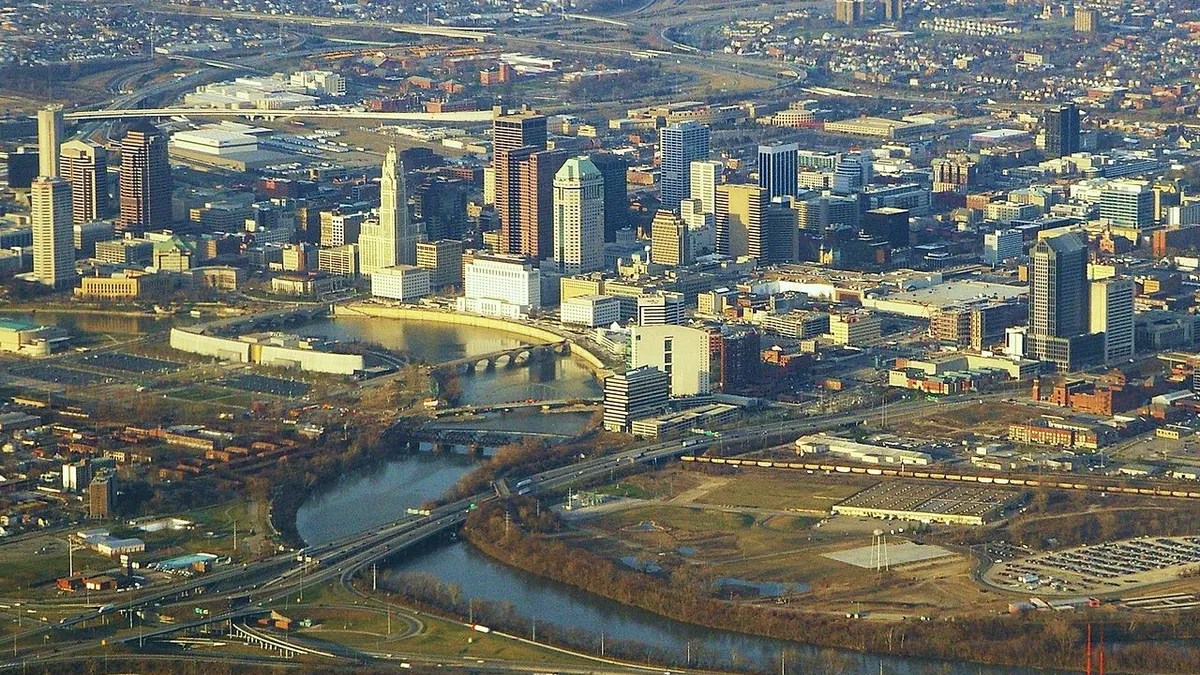Dive Brief:
-
While economic forecasters seem to be preparing contractors for a possible slowdown in the next year or so, there's no sign of that in the Columbus, Ohio, metropolitan statistical area, according to the most recent metro-specific information from Dodge Data & Analytics. In fact, the area has seen more than $4 billion in new starts this year when counting nonresidential, residential and public works projects.
-
From January through August of this year, the value of nonresidential starts alone was at $2.6 billion, an increase of 38% from the same period in 2018. August saw more than $700 million in new starts, and year-to-date residential starts were valued at $1.4 billion, up about 6% from 2018. Combined, this represents a 25% surge in new starts when compared to the period from January 2018 to August 2018.
-
It's too soon to tell if 2019 will be a record-setter for the Columbus area, but the dollar value of new starts has already eclipsed the total recorded for the years 2008 through 2014. Total new starts for the years of 2015 through 2018 came in at $5 billion; $4.5 billion; $5.3 billion; and $5.1 billion, respectively.
Dive Insight:
So, what is it about Columbus that is attracting so much development?
Much of the push, said Barton Hacker, president of the Central Ohio chapter of the Associated Builders and Contractors, is that more people are moving to Columbus. This is in stark contrast to other areas of the state where there has been relatively small population growth.
Between April 1, 2010, and July 1, 2018, according to the U.S. Census Bureau, Columbus' population grew by 13.1% versus the 1.3% increase for all of Ohio.
The Columbus area has been identified consistently as a top place to do business, Hacker said. It is also less expensive to live there than in larger U.S. metros, making it an attractive choice for millennials and their families. With that influx of people is also coming a modern job market that has turned the area into a logistics and technology hub, drawing even more younger people. Facebook and Google are building there, and Amazon is building its third local fulfillment center. "It's changing the landscape of the city," he said.
And it's not just tech companies behind the building boom, Hacker said. The housing necessary to accommodate all the new residents is filling up Columbus' downtown, neglected neighborhoods and the suburbs. There are also healthcare projects underway and even more construction activity happening at Ohio State University — $2.4 billion worth, according to Columbus Business First. There are at least 300 projects in the planning stages, underway or recently completed in the Columbus metro area, and Columbus Business is tracking them all on its Crane Watch map.
In August, crews broke ground on a $220 million, 28-story Hilton hotel in downtown Columbus, and just this week, the Columbus Crew SC started construction on its new $300 million soccer stadium, also in the city's downtown.
Still in the development pipeline is the $500 million Scioto Peninsula mixed-use neighborhood. The $250 million first phase will reportedly include six acres of open space at the center of the development, two hotels, three residential buildings, an eight-story office building and a 1,400-space parking garage.
The $1.5 billion Evans Farm, a walkable, new urbanism development in nearby Delaware County, is already underway, with plans for homes, retail, restaurants, parks, office and schools.
The downside to all this new construction activity, Hacker said, is trying to find enough skilled trade workers in a pool already stretched thin.
"It's difficult to find [local] workers," he said. There are construction crews coming in from out of state in an effort to make up the difference, and some projects have been delayed because of the shortage.
There are challenges, he said, but those are part of the growth that is making Columbus such an attractive choice for so many people. "It's very exciting," Hacker said.











